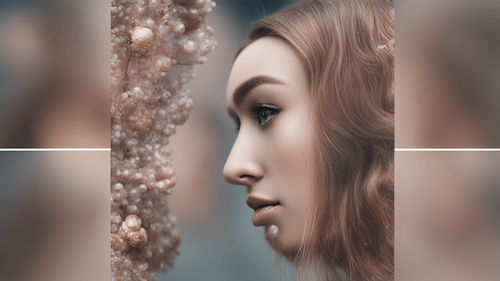
Introduction: Redefining Artistry through AI Innovation
Artificial Intelligence (AI) has become a driving force of innovation across various domains, and the realm of visual arts is no exception. The advent of AI generated images generators has revolutionized the creative landscape by offering a groundbreaking tool that enables artists, designers, and enthusiasts to explore new frontiers of imagination. In this comprehensive article, we delve into the exciting world of AI generated images generators, exploring their technology, applications, impact on industries, and the remarkable fusion of human creativity with machine intelligence.
AI Generated Images Generator: Unveiling the Technology
Understanding AI and Generative Models
AI, often referred to as machine intelligence, is a branch of computer science that involves the development of systems capable of performing tasks that typically require human intelligence. At the heart of AI generated images generators are generative models, algorithms designed to produce new content based on patterns learned from existing data. These models employ techniques like Generative Adversarial Networks (GANs) and Variational Autoencoders (VAEs) to create compelling visuals that push the boundaries of artistic expression.
The Role of Neural Networks
Neural networks, inspired by the human brain's interconnected neurons, are the building blocks of AI generated images generators. These networks consist of layers that process and transform data, ultimately generating images with remarkable realism. The deep learning aspect of neural networks empowers AI systems to recognize intricate details, textures, and styles, resulting in images that resonate with human aesthetics.
Training Data and Fine-Tuning
The effectiveness of AI generated images generators heavily depends on the quality and diversity of training data. By exposing the AI model to a wide array of images, styles, and concepts, the system learns to generate visuals that capture the essence of different artistic genres. Fine-tuning the model further refines its output, enabling artists to guide the AI's creativity and mold it to their vision.
Applications of AI Generated Images Generator
Elevating Visual Arts and Design
AI generated images generators have transcended traditional creative boundaries, enabling artists to break free from conventional techniques. Designers can harness these tools to rapidly prototype ideas, experiment with novel concepts, and create stunning visuals that captivate audiences. The fusion of human ingenuity with AI's computational power has sparked a renaissance in digital artistry, leading to the emergence of new artistic movements.
Innovating Content Creation and Marketing
Content creation, a cornerstone of modern marketing, has witnessed a paradigm shift with the integration of AI generated images generators. Brands and marketers can now produce captivating visuals for advertisements, social media campaigns, and branding efforts. This streamlined approach not only saves time but also ensures consistent, high-quality content that resonates with target audiences.
Empowering Game Development
The gaming industry thrives on immersive worlds and captivating visuals. AI generated images generators contribute to game development by rapidly generating diverse assets, landscapes, and characters. This accelerates the creative process, allowing developers to focus on narrative and gameplay while leveraging AI for rich visual content.
AI Generated Images Generator in Various Industries
Fashion and Apparel Design
The fashion industry is synonymous with innovation and aesthetics. AI generated images generators have found a home here, enabling designers to explore avant-garde concepts and envision unique clothing lines. By generating diverse garment designs, patterns, and color schemes, AI becomes a collaborative partner in shaping the future of fashion.
Architectural Visualization
Architects and urban planners benefit from AI generated images generators in creating lifelike visualizations of their designs. These tools transform blueprints into photorealistic images, allowing stakeholders to experience a project's potential before construction begins. This enhances decision-making and facilitates effective communication among project teams.
Healthcare Imaging and Research
AI generated images generators hold promise in the medical field, contributing to advanced imaging and research. Radiologists can utilize AI to generate detailed medical images for diagnostics, while researchers leverage the technology to simulate biological structures and better understand complex biological processes.
FAQs about AI Generated Images Generator
How does AI generate images that match specific styles?
AI models are trained on diverse datasets containing various styles. By learning the nuances of different artistic genres, these models can generate images that emulate specific styles through neural network transformations.
Can AI generated images be used for commercial purposes?
Yes, AI generated images can be used for commercial purposes. However, it's essential to ensure that the generated content adheres to copyright and licensing regulations.
Is human intervention required in AI-generated art?
Human intervention can play a role in refining AI-generated art. Artists can provide feedback and adjust parameters to guide the AI's creative process, resulting in outputs that align with their artistic vision.
What are the ethical considerations of AI-generated images?
Ethical concerns regarding AI-generated images include issues of authenticity, copyright, and potential misuse. Striking a balance between AI's contributions and human creativity is crucial to address these concerns.
Can AI generated images replace human artists?
AI generated images are a tool that complements human creativity. While AI can produce impressive visuals, the unique perspective, emotions, and narrative depth offered by human artists remain unparalleled.
How is AI generated art influencing cultural shifts?
AI generated art challenges conventional notions of authorship and creativity, sparking discussions about the nature of art and the role of technology in shaping cultural trends.
Conclusion: A New Horizon for Creative Expression
The evolution of AI generated images generators marks a significant milestone in the convergence of technology and art. As AI continues to evolve, so does the potential for artists and creators to push the boundaries of their imagination. The seamless integration of AI-generated art into industries underscores the transformative power of innovation. The journey of exploration and experimentation has just begun, promising a future where human creativity and AI's ingenuity coalesce to create masterpieces that captivate the world's imagination.